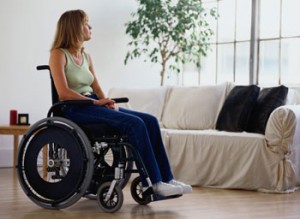Although statistics vary widely from disability to disability, women with disabilities (WWDs) in general are more likely to experience physical, sexual, and emotional abuse for longer periods of time than women without disabilities. One of the biggest obstacles to understanding the prevalence and effects of violence against women with disabilities is the dearth of research and the tendency to overlook disability as an important factor when evaluating cases. For example, a comprehensive report was published by the National Institute of Justice’s Center for Disease Control and Prevention in 1998, which detailed findings from a national survey focused on violence against women. Although the report identified other variables (such as age and race) that contribute to higher rates of abuse, disability was not even mentioned as a category. I hesitate to offer actual statistics, since data is scattered or outdated, the survey methods may not be reliable, and actual incidences of abuse are under-reported. The statistics indicating a higher likelihood of abuse against WWDs (compared to women without disabilities) range anywhere from 1.5 to 10 times. Both WWDs and women without disabilities experience similar rates of abuse over their lifetimes, but the nature and duration of the abuse are what make violence against WWDs particularly significant.
 Many persons with disabilities (PWDs) are dependent on doctors, therapists, psychiatrists, nurses, social workers, caretakers, friends, or family members for direct care. Their dependence and intimate contact with such an extensive support group supply greater opportunities for abuse, and make PWDs more vulnerable to exploitation. Physical or developmental limitations also greatly expand the types of abuse that PWDs experience on a day-to-day basis. Those individuals who are dependent on others for personal or medical care can experience
Many persons with disabilities (PWDs) are dependent on doctors, therapists, psychiatrists, nurses, social workers, caretakers, friends, or family members for direct care. Their dependence and intimate contact with such an extensive support group supply greater opportunities for abuse, and make PWDs more vulnerable to exploitation. Physical or developmental limitations also greatly expand the types of abuse that PWDs experience on a day-to-day basis. Those individuals who are dependent on others for personal or medical care can experience
- Neglect by being denied food or medication
- Psychological abuse such as social isolation, intimidation and threats, or being denied the right to make decisions about their private lives
- Physical abuse in the form of rough handling, confinement, inappropriate restraint, outright assault, or being offered incorrect doses of medication; and
- Financial exploitation, by having little access to money, or having their funds mishandled.
Moreover, as with most women who have experienced abuse, WWDs are more likely to be exploited by their partners. In addition to the types of abuse described above, WWDs experience sexual mistreatment uniquely as women, including unwanted sexual contact, assault, denial of sex education, or forced sterilization and abortions. Because some WWDs are physically unable to seek help, they are often targeted and manipulated by exploitative partners. Moreover, for those who are physically able to escape, a combination of lower self-esteem, a sense of powerlessness, the inability to comprehend the danger to their lives, or the fear of not finding other loving partners, may prevent WWDs from leaving their abusive relationships.
As an introduction to this issue, I wanted to simply raise the aspect of disability, which is still largely ignored by those who are working against the domestic abuse of women. In my next post, I will address some of the problems faced by WWDs in seeking help, and receiving appropriate rehabilitation and assistance.


